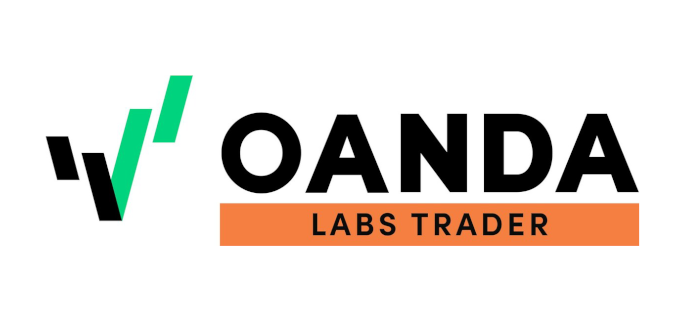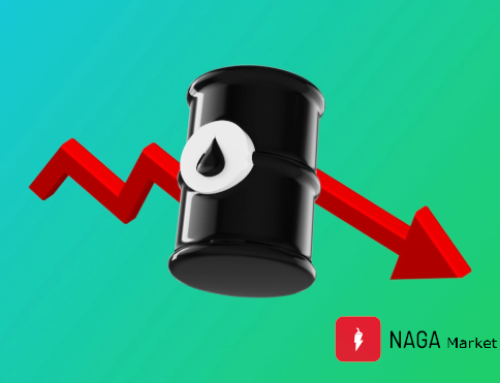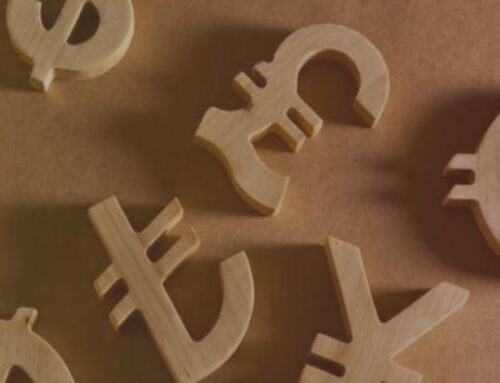04 / 04 / 2024
CN – EN | Oanda Labs | Introduction to the Euro (EUR)
Translated from Chinese into English by Wordwide FX
Introduction to the Euro (EUR)
The euro was introduced in 1999 and, as of January 2019, is the official currency of 19 countries, the most of any currency worldwide in modern times. The euro is also the second most traded currency in the world, following only the US dollar.
As a currency, the euro is managed by the European Central Bank (ECB). As the economic situation of each country can differ greatly, the ECB is tasked with the challenge of developing a monetary policy strategy that can be implemented universally across all economies that have adopted the euro.
Membership in the European Union is often tied to the use of the euro, although some member states, like Romania, have not adopted the euro as their official currency.
The world’s #2 international currency
In addition to being the number two international currency in the world, the euro also maintains the title of the second-most held reserve currency of central banks globally, following the US Dollar.
As a result, this often means that when the outlook is bearish on the US dollar, the market will buy euros and sell the US dollar simultaneously in order to make a profit. This relationship between the two currencies is one of the major factors contributing to EUR/USD being the most traded currency pair worldwide.
Again, owing to this connection between the two currencies and similarly to the dollar, the performance of the euro can be correlated to other assets, such as oil and gold.
The graph below shows both the price action of oil, EUR/USD and EUR/JPY respectively. Although not exactly the same, it can be said that the relationship between the price of each asset is not unrelated.
A way to view the economy of the Eurozone
The economy of the eurozone is unique in how each country contributes to overall gross domestic product (GDP).
Germany alone accounts for the highest proportion of eurozone GDP, at around 30%, while France comes in second, with the two nations together responsible for almost half of the total GDP of the eurozone economy. If Italy and Spain are added to this list, this figure will increase to three-quarters of total GDP.
On account of this, it is often helpful to study key data releases from Germany, France, Italy, and Spain respectively, to better understand the performance and overall direction of the eurozone in general.
[Ratio of GDP in the Eurozone (2017)]How does the gap between American & German 10-year bond yields affect euro price?
The chart below compares the USD/EUR (the reverse of the EUR/USD) to the gap between the US 10-year bond yield and the German 10-year bond yield. A strong correlation can be seen.
In addition, the market will react to the gap in bond yields between Eurozone countries. For example, if the bond yields of another country rise against Germany’s bond yields, a larger gap indicates a higher possibility of risk in that country. This in turn becomes a factor when selling the Euro.
[EUR/USD vs US 10-year bond yield -German 10-year bond yield]How does euro volatility change at market open?
The euro, as an asset, can experience different levels of volatility across the different market sessions.
Typically, the euro undergoes less volatile changes in price during the Asian session, but naturally, during the European session, volatility can be significantly higher. During the European session, many traders will focus on trading EUR/USD.
That said, there can be some exceptions. EUR/JPY can experience some volatility during the Asian session, but often traders will choose to trade USD/JPY instead, often boasting higher volatility than its European counterpart.
Understanding where the most market liquidity can be found can be very important to determining the probability of your trade being successful.
Q
What are the key aspects of the euro (EUR) in FX trading?
A
The euro was introduced in 1999 and, as of January 2019, is the official currency of 19 countries, the most of any currency worldwide in modern times. The euro is also the second most traded currency in the world, following only the US dollar.
As a currency, the euro is managed by the European Central Bank (ECB). As the economic situation of each country can differ greatly, the ECB is tasked with the challenge of developing a monetary policy strategy that can be implemented universally across all economies that have adopted the euro.
Membership in the European Union is often tied to the use of the euro, although some member states, like Romania, have not adopted the euro as their official currency. As of January 2019, the Euro is the currency of 19 members of the European Union. It is the second most traded currency in the world after the US Dollar. The Euro is also the second most liquid currency in the world after the US Dollar. It is also second only to the US Dollar among the reserve currencies of central banks. Therefore, when there is a negative situation against the US Dollar, the market will buy Euros and sell US Dollars to make a profit. To find out about the strength of the US Dollar, we achieve a better understanding if we study the Euro exchange rate (EUR/USD) first.
歐元(EUR)的特徵介紹-檢視歐元區經濟的方法
流動性僅次於美元排世界第2
歐元是加入歐盟的19個國家(2019年1月現在)所使用的貨幣。交易量是僅次於美元的世界第2的貨幣。
歐元是在1999年開始使用的比較新的貨幣。
因為歐元不是1個國家而是在多數國家所使用,所以貨幣管理也不是由1個國家的中央銀行,而是由歐元區的中央銀行ECB(歐洲中央銀行)所管理。
多數國家中當然有經濟好的國家,也有不好的國家,每個國家的經濟情況都不一樣,ECB肩負著制定可以在多數國家可推行的金融政策。
作為世界第2國際貨幣的性質
歐元因為流動性是僅次於美元的貨幣,除了具有世界第2國際貨幣的性質以外,在各國央行儲備貨幣中也是僅次於美元。
所以,當出現利空美元的材料時,歐元具有作為拋售美元的回報而被市場容易選擇的特征。在我們想知道美元的強弱時,最先查看歐元匯率(EURUSD)可以更有效的掌握美元的強弱。
另外,根據其作為美元回報的性質,也可以找到與原油、黃金等商品市場的相關性。
下圖是把原油價格的走勢顯示在歐元/美元和歐元/日圓波動比較的圖標上。雖然,走勢並不是完全一樣,但是在價格的方向上可以確認到有一定的相關性。
查看歐元區經濟的方法
從歐元區的GDP構成佔比率來看,德國的佔比率最高,大約有3成左右。
另外,德國和法國兩國就有將近一半的佔比率,把義大利和西班牙也加入的話,4個國家就占了整體的4分之3。
所以,在查看經濟指標時除了歐元區整體以外,查看以德國為中心的前4位國家的數據可以容易掌握歐元區整體的方向。
除此之外,考慮到歐元是在多數國家使用的貨幣,也需要多注意經濟好的國家和經濟不好的國家之間的差距。
美國10年公債殖利率與德國10年公債殖利率之間的差距
美國公債殖利率與德國公債殖利率的差距有時會影響歐元/美元走勢。
下圖是把歐元/美元反過來的美元/歐元與美國10年公債殖利率和德國10年公債殖利率的差距相比較的圖表。可以看到有很強的相關性。
另外,市場也會根據歐元區各國之間的公債殖利率的差距做出反應。例如,相比德國的公債,其他國家的公債殖利率上漲,差距越大越說明在那個國家出現風險的可能性越高,也將會成為拋售歐元的材料。
歐洲市場開放後波動性大幅增加
歐元在亞洲市場的波動性雖然不大,但是在歐洲市場開放後交易會大幅增加。
歐元/日圓因為是美元/日圓主導,在亞洲市場也會有一些波動,但是做歐元/美元的短線交易時,在歐洲市場開放後交易可以更好地提高效率。事前分析好走勢,確認容易波動的時間。
外匯交易中歐元(EUR)有何特色?
歐元是加入歐盟的19個國家(2019年1月現在)所使用的貨幣。交易量是僅次於美元的世界第2的貨幣。歐元因為流動性是僅次於美元的貨幣,除了具有世界第2國際貨幣的性質以外,在各國央行儲備貨幣中也是僅次於美元。所以,當出現利空美元的情況時,歐元具有作為拋售美元的回報而被市場容易選擇的特徵。在我們想知道美元的強弱時,最先查看歐元匯率(EURUSD)可以更有效的掌握美元的強弱。
歐元區公債殖利率如何影響歐元走勢?
外匯市場會根據歐元區各國之間的公債殖利率的差距做出反應。例如,相比德國的公債,其他國家的公債殖利率上漲,差距越大越說明在那個國家出現風險的可能性越高,也將會成為拋售歐元的因素。
歐元(EUR)的特徵介紹-檢視歐元區經濟的方法
流動性僅次於美元排世界第2
歐元是加入歐盟的19個國家(2019年1月現在)所使用的貨幣。交易量是僅次於美元的世界第2的貨幣。
歐元是在1999年開始使用的比較新的貨幣。
因為歐元不是1個國家而是在多數國家所使用,所以貨幣管理也不是由1個國家的中央銀行,而是由歐元區的中央銀行ECB(歐洲中央銀行)所管理。
多數國家中當然有經濟好的國家,也有不好的國家,每個國家的經濟情況都不一樣,ECB肩負著制定可以在多數國家可推行的金融政策。
作為世界第2國際貨幣的性質
歐元因為流動性是僅次於美元的貨幣,除了具有世界第2國際貨幣的性質以外,在各國央行儲備貨幣中也是僅次於美元。
所以,當出現利空美元的材料時,歐元具有作為拋售美元的回報而被市場容易選擇的特征。在我們想知道美元的強弱時,最先查看歐元匯率(EURUSD)可以更有效的掌握美元的強弱。
另外,根據其作為美元回報的性質,也可以找到與原油、黃金等商品市場的相關性。
下圖是把原油價格的走勢顯示在歐元/美元和歐元/日圓波動比較的圖標上。雖然,走勢並不是完全一樣,但是在價格的方向上可以確認到有一定的相關性。
查看歐元區經濟的方法
從歐元區的GDP構成佔比率來看,德國的佔比率最高,大約有3成左右。
另外,德國和法國兩國就有將近一半的佔比率,把義大利和西班牙也加入的話,4個國家就占了整體的4分之3。
所以,在查看經濟指標時除了歐元區整體以外,查看以德國為中心的前4位國家的數據可以容易掌握歐元區整體的方向。
除此之外,考慮到歐元是在多數國家使用的貨幣,也需要多注意經濟好的國家和經濟不好的國家之間的差距。
美國10年公債殖利率與德國10年公債殖利率之間的差距
美國公債殖利率與德國公債殖利率的差距有時會影響歐元/美元走勢。
下圖是把歐元/美元反過來的美元/歐元與美國10年公債殖利率和德國10年公債殖利率的差距相比較的圖表。可以看到有很強的相關性。
另外,市場也會根據歐元區各國之間的公債殖利率的差距做出反應。例如,相比德國的公債,其他國家的公債殖利率上漲,差距越大越說明在那個國家出現風險的可能性越高,也將會成為拋售歐元的材料。
歐洲市場開放後波動性大幅增加
歐元在亞洲市場的波動性雖然不大,但是在歐洲市場開放後交易會大幅增加。
歐元/日圓因為是美元/日圓主導,在亞洲市場也會有一些波動,但是做歐元/美元的短線交易時,在歐洲市場開放後交易可以更好地提高效率。事前分析好走勢,確認容易波動的時間。
外匯交易中歐元(EUR)有何特色?
歐元是加入歐盟的19個國家(2019年1月現在)所使用的貨幣。交易量是僅次於美元的世界第2的貨幣。歐元因為流動性是僅次於美元的貨幣,除了具有世界第2國際貨幣的性質以外,在各國央行儲備貨幣中也是僅次於美元。所以,當出現利空美元的情況時,歐元具有作為拋售美元的回報而被市場容易選擇的特徵。在我們想知道美元的強弱時,最先查看歐元匯率(EURUSD)可以更有效的掌握美元的強弱。
歐元區公債殖利率如何影響歐元走勢?
外匯市場會根據歐元區各國之間的公債殖利率的差距做出反應。例如,相比德國的公債,其他國家的公債殖利率上漲,差距越大越說明在那個國家出現風險的可能性越高,也將會成為拋售歐元的因素。
Translated from Chinese into English by Wordwide FX
Introduction to the Euro (EUR)
The euro was introduced in 1999 and, as of January 2019, is the official currency of 19 countries, the most of any currency worldwide in modern times. The euro is also the second most traded currency in the world, following only the US dollar.
As a currency, the euro is managed by the European Central Bank (ECB). As the economic situation of each country can differ greatly, the ECB is tasked with the challenge of developing a monetary policy strategy that can be implemented universally across all economies that have adopted the euro.
Membership in the European Union is often tied to the use of the euro, although some member states, like Romania, have not adopted the euro as their official currency.
The world’s #2 international currency
In addition to being the number two international currency in the world, the euro also maintains the title of the second-most held reserve currency of central banks globally, following the US Dollar.
As a result, this often means that when the outlook is bearish on the US dollar, the market will buy euros and sell the US dollar simultaneously in order to make a profit. This relationship between the two currencies is one of the major factors contributing to EUR/USD being the most traded currency pair worldwide.
Again, owing to this connection between the two currencies and similarly to the dollar, the performance of the euro can be correlated to other assets, such as oil and gold.
The graph below shows both the price action of oil, EUR/USD and EUR/JPY respectively. Although not exactly the same, it can be said that the relationship between the price of each asset is not unrelated.
A way to view the economy of the Eurozone
The economy of the eurozone is unique in how each country contributes to overall gross domestic product (GDP).
Germany alone accounts for the highest proportion of eurozone GDP, at around 30%, while France comes in second, with the two nations together responsible for almost half of the total GDP of the eurozone economy. If Italy and Spain are added to this list, this figure will increase to three-quarters of total GDP.
On account of this, it is often helpful to study key data releases from Germany, France, Italy, and Spain respectively, to better understand the performance and overall direction of the eurozone in general.
How does the gap between American & German 10-year bond yields affect euro price?
The chart below compares the USD/EUR (the reverse of the EUR/USD) to the gap between the US 10-year bond yield and the German 10-year bond yield. A strong correlation can be seen.
In addition, the market will react to the gap in bond yields between Eurozone countries. For example, if the bond yields of another country rise against Germany’s bond yields, a larger gap indicates a higher possibility of risk in that country. This in turn becomes a factor when selling the Euro.
[EUR/USD vs US 10-year bond yield -German 10-year bond yield]
How does euro volatility change at market open?
The euro, as an asset, can experience different levels of volatility across the different market sessions.
Typically, the euro undergoes less volatile changes in price during the Asian session, but naturally, during the European session, volatility can be significantly higher. During the European session, many traders will focus on trading EUR/USD.
That said, there can be some exceptions. EUR/JPY can experience some volatility during the Asian session, but often traders will choose to trade USD/JPY instead, often boasting higher volatility than its European counterpart.
Understanding where the most market liquidity can be found can be very important to determining the probability of your trade being successful.
Q
What are the key aspects of the euro (EUR) in FX trading?
A
The euro was introduced in 1999 and, as of January 2019, is the official currency of 19 countries, the most of any currency worldwide in modern times. The euro is also the second most traded currency in the world, following only the US dollar.
As a currency, the euro is managed by the European Central Bank (ECB). As the economic situation of each country can differ greatly, the ECB is tasked with the challenge of developing a monetary policy strategy that can be implemented universally across all economies that have adopted the euro.
Membership in the European Union is often tied to the use of the euro, although some member states, like Romania, have not adopted the euro as their official currency. As of January 2019, the Euro is the currency of 19 members of the European Union. It is the second most traded currency in the world after the US Dollar. The Euro is also the second most liquid currency in the world after the US Dollar. It is also second only to the US Dollar among the reserve currencies of central banks. Therefore, when there is a negative situation against the US Dollar, the market will buy Euros and sell US Dollars to make a profit. To find out about the strength of the US Dollar, we achieve a better understanding if we study the Euro exchange rate (EUR/USD) first.






